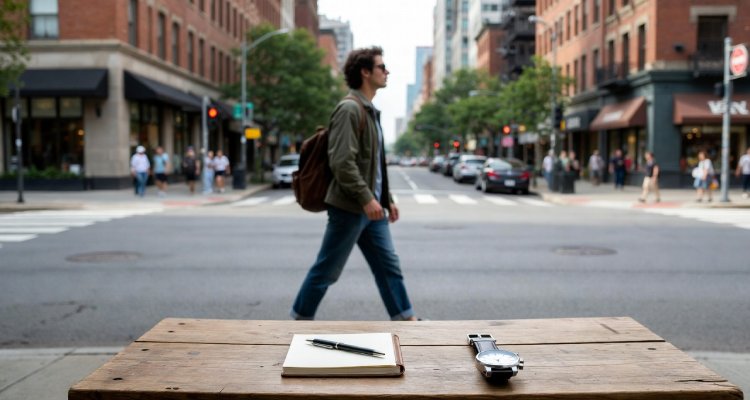How Silence Became the Most Expensive Luxury
As the world grows louder—both literally and digitally—true silence has become a rare, coveted, and costly commodity. Here’s why silence is now a luxury.
Introduction: The Price Tag on Peace
In a world filled with constant pings, alerts, chatter, engines, and overcrowded cities, one thing is increasingly elusive: silence. Not just quiet—but total, restorative silence. Once considered free and plentiful, silence is now a privilege that only a few can afford. From $3,000-per-night wellness retreats in the Alps to luxury apartments promising “sonic sanctuaries,” silence is no longer just golden—it’s expensive.
The Rise of Global Noise: How We Got Here
Urbanization, industrialization, and digital saturation have dramatically increased noise pollution over the past century. Today, more than 60% of the global population lives in urban areas, where ambient noise levels can routinely exceed safe thresholds established by the World Health Organization (WHO).
Noise has moved beyond an annoyance—scientific studies link chronic exposure to noise with serious health issues, including stress, sleep disorders, hypertension, and even cardiovascular disease. The constant hum of cities, the buzz of smartphones, and even the whirring of appliances create a never-ending backdrop of sound that the human brain was never designed to tolerate.
The New Elite Obsession: Chasing Stillness
Recognizing the value of silence, the ultra-wealthy are now investing heavily in it. High-end real estate developers are marketing “quiet luxury” as a feature. Residences come with triple-glazed soundproof windows, acoustic insulation, and even white noise masking systems to block out external sounds.
Meanwhile, the wellness industry has capitalized on the need for auditory relief. Elite resorts offer digital detox packages and silence retreats, some costing upwards of $10,000 for a week of meditation, solitude, and sound isolation. In Finland, “luxury silence” tourism is booming as people flock to the forests for off-the-grid experiences.
In the U.S., the concept of “silent architecture” has gained traction. Architects now design spaces with acoustic mindfulness, employing techniques like sound baffles, cork walls, and no-noise HVAC systems. Silence is no longer accidental; it’s engineered.
Expert Insight: Why We Crave Quiet
Dr. Priya Natarajan, a neuroscientist at Columbia University, explains, “The brain uses silence to reset. Unlike noise, silence helps reduce cortisol levels and activates the default mode network, which supports introspection and creativity.”
Studies published in the journal Brain, Structure and Function show that two minutes of silence can be more relaxing than listening to soothing music. As Dr. Natarajan puts it, “Silence isn’t an absence—it’s a healing presence.”
Psychologists also note that the overstimulated modern brain is in a near-constant state of alert. “Our attention is fragmented,” says Dr. Elena Moore, a behavioral psychologist. “Silence acts like a defragmenter. It’s the new status symbol—because few can actually attain it.”
Who’s Affected—and Who’s Left Out?
While the wealthy can afford curated silence, the majority of the global population cannot. Lower-income neighborhoods are disproportionately affected by noise pollution—located near highways, airports, factories, and lacking soundproof infrastructure.
This growing sonic divide reflects deeper societal inequities. Silence is becoming another resource—like clean air or green space—that’s inaccessible to many.
Additionally, as public spaces grow louder, those who crave quiet find themselves pushed toward privatized, expensive environments: exclusive retreats, noise-canceling technology, and soundproofed luxury apartments.
The rise of paid silence raises troubling questions: Should access to peace and quiet depend on one’s income level? Is noise becoming a human rights issue?
The Future of Silence: Commodity or Right?
With urban expansion unlikely to slow and digital dependency increasing, the demand for silence will only grow. Technology may offer temporary relief—noise-canceling headphones, AI-powered ambient filters, smart home quiet zones—but these are often stopgaps.
A potential policy-driven solution lies in urban design. Cities like Barcelona and Amsterdam are already experimenting with “quiet zones” and stricter noise ordinances. But to scale such initiatives globally requires political will and public awareness.
Meanwhile, brands and developers are increasingly aware that silence sells. And they’re packaging it as part of a high-end lifestyle—turning peace into profit.
Conclusion: Reclaiming the Sound of Nothing
In a world where every moment is filled with chatter, alerts, engines, and algorithms, silence has become the ultimate escape—and for many, a distant dream. As it becomes a luxury reserved for the privileged, the rest of the world is left to cope with the cost of noise.
But maybe the answer isn’t in commodifying silence further—but in recognizing it as essential. Perhaps the future isn’t in buying silence, but in designing a world where everyone has the right to hear nothing at all.
Disclaimer: This article is for informational purposes only and does not constitute medical or psychological advice. Please consult qualified professionals for specific health or wellness concerns.











